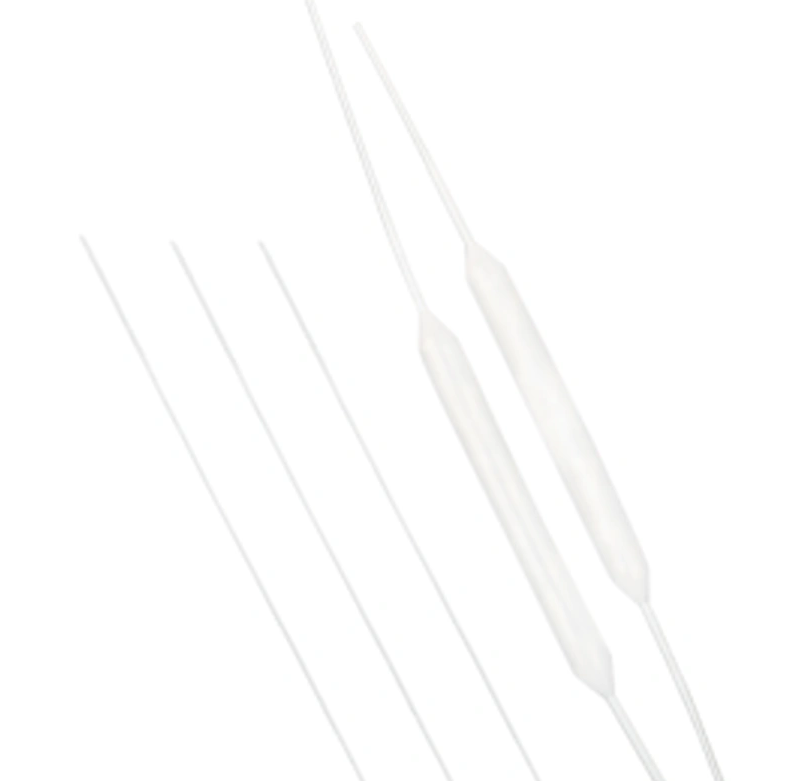Imagine a medical device so precisely engineered that it can enhance blood circulation, inflate and deflate with impeccable control, while maintaining consistent pressure, enabling treatment of life-threatening conditions. This is the realm of balloon forming, a specialized manufacturing technique that serves as a cornerstone in the creation of essential devices such as balloon catheters. At Demax, a leader in this advanced field, state-of-the-art technology and unparalleled expertise converge to redefine the limits of precision and quality in medical device manufacturing.

What is Balloon Forming? How Does It Stand Out?
Balloon forming is a highly intricate process that demands not only technical skill but also specialized machinery designed to shape balloon catheters, which are employed in various critical medical procedures. Demax utilizes this cutting-edge technology to manufacture medical balloons that can expand and contract with precision, applying uniform pressure to ensure they operate efficiently within the human body. The consistency achieved in this process is essential, especially when these devices are used in sensitive applications, such as expanding constricted arteries or facilitating the insertion of stents.
What truly differentiates Demax’s approach to balloon forming from conventional methods is their reliance on sophisticated technologies that provide granular control over key factors—temperature, pressure, and time. Such precise regulation ensures the production of consistently high-quality medical balloons. The advantages of Demax’s balloon formation services include:
In-depth expertise and a wealth of experience in material science and medical device design.
A team of highly skilled professionals capable of troubleshooting and delivering practical, efficient solutions.
Advanced balloon forming technology that guarantees unmatched precision, consistency, and productivity.
This technology is pivotal in shaping balloon catheters for use in a variety of interventions, including angioplasty and stenting. By offering customizable features such as controlled expansion and pressure application, this process is essential for ensuring the success of these critical procedures.
The Critical Role of Balloon Forming in Medical Applications
Balloon forming is most commonly associated with the production of balloon catheters, which are used extensively in minimally invasive surgeries designed to treat a broad spectrum of medical conditions. One of the best-known uses of balloon catheters is percutaneous transluminal coronary angioplasty (PTCA), a procedure that helps to open up blocked arteries in the heart. Beyond coronary treatments, balloon catheters also play a significant role in treating conditions such as peripheral artery disease (PAD), pulmonary angioplasty, and aortic valve stenosis.
Applications in Coronary and Peripheral Arteries
The primary benefit of balloon catheters lies in their ability to inflate and deflate with pinpoint accuracy, allowing for effective treatment while minimizing trauma to nearby tissues. In procedures such as PTCA, for example, balloon catheters are inserted into a constricted or obstructed artery and inflated to widen the vessel. This critical action restores blood flow, reducing the risk of heart attacks and other complications. Demax’s advanced balloon forming technology ensures that each catheter meets specific dimensional criteria for coronary applications, with diameters ranging from 1.25 mm to 5.0 mm and lengths varying between 6 mm and 30 mm.
Utilization in Pulmonary Angioplasty and Aortic Valve Stenosis
Beyond coronary artery treatments, balloon forming technology is equally vital in pulmonary angioplasty and managing aortic valve stenosis. Both conditions involve the narrowing of critical blood vessels or heart valves, and balloon catheters offer an indispensable means of restoring proper function. The versatility of Demax’s technology allows for custom balloon diameters between 3.0 mm and 12 mm, with lengths extending up to 300 mm, ensuring that a wide array of patient needs can be addressed efficiently.
Addressing Peripheral Arterial Disease (PAD) and Other Advanced Conditions
In the treatment of PAD, where arteries in the legs and lower extremities become narrowed, balloon catheters allow for the reopening of these vessels and the restoration of normal blood flow. The high degree of precision and reproducibility achieved through Demax’s balloon forming technology translates into better procedural outcomes and improved patient health. Whether utilized in coronary or peripheral contexts, the precision of these balloon catheters is a vital component in the success of minimally invasive medical interventions.
Balloon Forming Technology: Where Precision Meets Innovation
At Demax, balloon forming is far from a simple manufacturing process—it is a carefully calibrated science, where precision and innovation combine to produce consistently superior results. By utilizing specialized equipment, Demax ensures that each balloon catheter is crafted to meet the stringent standards required for medical applications. The journey begins with the careful selection of high-performance thermoplastic materials such as polyurethane and nylon, chosen based on their compatibility with the exacting requirements of medical use.
Advanced Capabilities of the Forming Machines
The machinery involved in the balloon forming process at Demax is engineered specifically for medical device manufacturing. These machines are capable of finely controlling temperature, pressure, and time to deliver exceptional product quality in every production batch. Such fine-tuned control is critical, as even the slightest deviations in these parameters can significantly impact the performance of the medical balloon during life-saving procedures.
Moreover, the machines offer high reproducibility, ensuring that each balloon produced is virtually identical to the last. This consistency is paramount in medical device manufacturing, where even minor flaws can lead to adverse patient outcomes. Demax’s unwavering focus on precision and rigorous quality control protocols enables the production of balloon catheters that meet the strict requirements of the healthcare sector.
Selecting and Optimizing Material Compatibility
Another critical aspect of the balloon forming process is material selection. Thermoplastic materials such as polyurethane and nylon are preferred for their flexibility, durability, and biocompatibility. However, not all materials are ideal for every application, which is why Demax’s expert team plays a pivotal role in identifying and selecting the most suitable material for each specific case. By making the correct material choices, Demax maximizes both the performance and longevity of the balloon catheters they produce.
Customization and Versatility in Production
A standout feature of Demax’s balloon forming technology is its ability to provide customized solutions.Solutions. The versatility of the equipment means that balloons of various sizes and shapes can be manufactured. to meet the specific needs of various medical procedures. For example, PTCA balloons are typically 1.25 mm to 5.0 mm in diameter. PTA balloons are much larger, up to 12 mm in diameter and 300 mm in length. This adaptability allows Demax to serve a broad spectrum of medical requirements with products tailored to meet exacting standards.
The Future of Balloon Forming in Medical Device Manufacturing
With the continuous development of medical technology. The demand for balloon catheters with superior reliability and accuracy will continue to increase. Demax is at the forefront of this growing field. Leveraging its extensive expertise in balloon molding to produce equipment to the highest quality standards. By investing in innovative technology and maintaining a commitment to ongoing professional development. Demax ensures that it remains at the forefront of the balloon molding industry.

Innovation in Minimally Invasive Procedures
Looking towards the future, the balloon forming industry promises even more exciting developments in minimally invasive medical procedures. As devices become increasingly sophisticated, there will be a growing need for even more precise, customizable balloon catheters. Demax is already anticipating this demand by continuously exploring new materials, techniques, and technologies that will redefine the capabilities of balloon forming.
Meeting Healthcare’s Evolving Challenges
In the ever-changing healthcare environment. The ability to manufacture high-quality medical devices quickly and efficiently has never been more important. Demax’s balloon molding technology helps address this challenge. Equipping medical professionals with the reliable tools they need to perform critical life-saving interventions. From coronary angioplasty to peripheral artery treatments, Demax’s expertise in balloon forming is shaping the future of medical device manufacturing.
Conclusion
Balloon forming is more than just a manufacturing process—it is an essential component of modern healthcare. Through the synergy of advanced technology, expert craftsmanship, and a relentless commitment to quality, Demax ensures that their balloon catheters meet the exacting demands of today’s medical applications. The demand for minimally invasive surgeries continues to grow. Demax’s balloon molding technology will undoubtedly play an indispensable role in future medical device manufacturing. Ensuring safer and more effective treatments for patients worldwide.